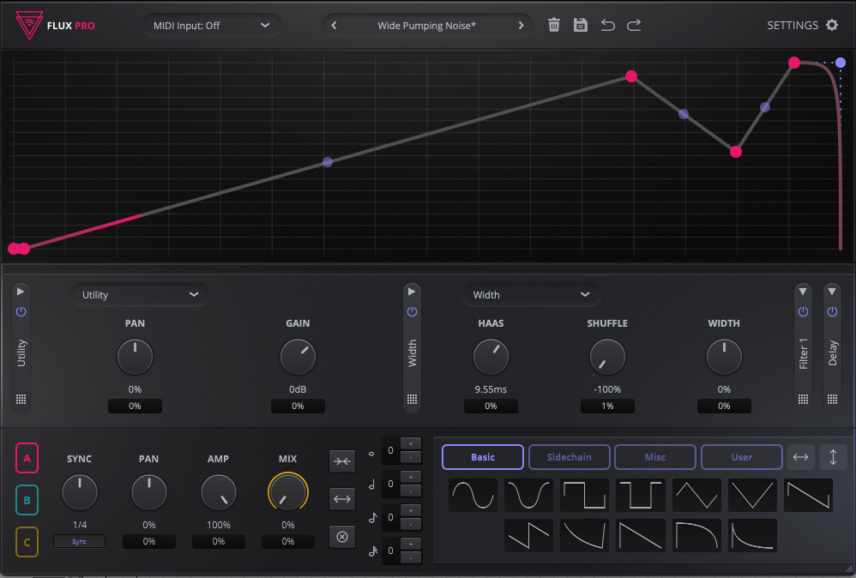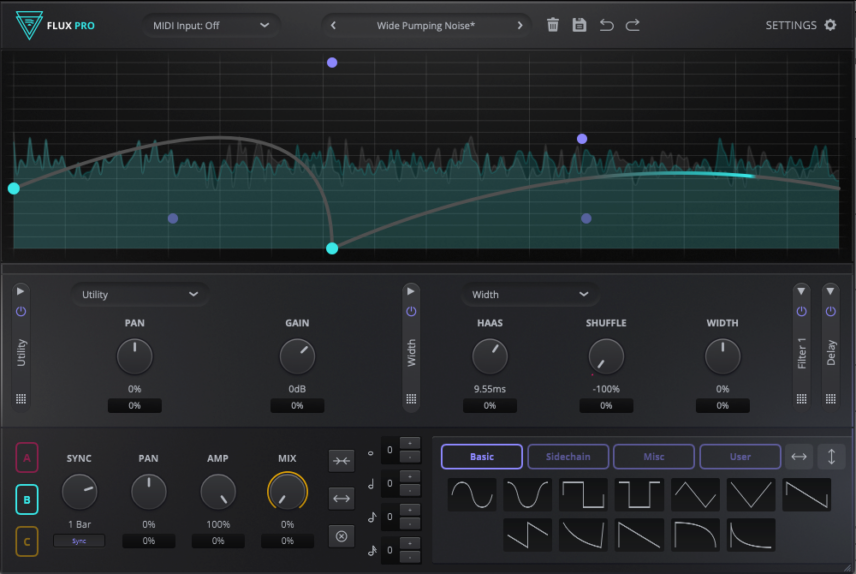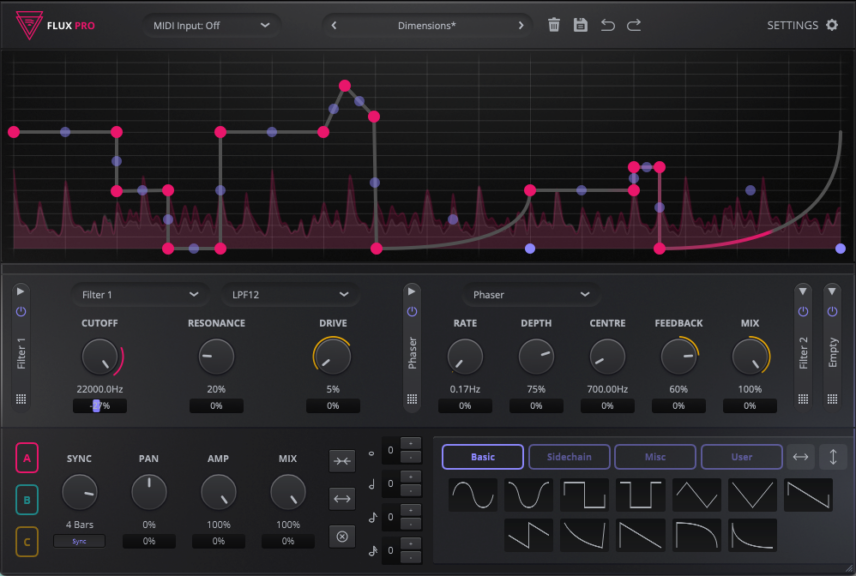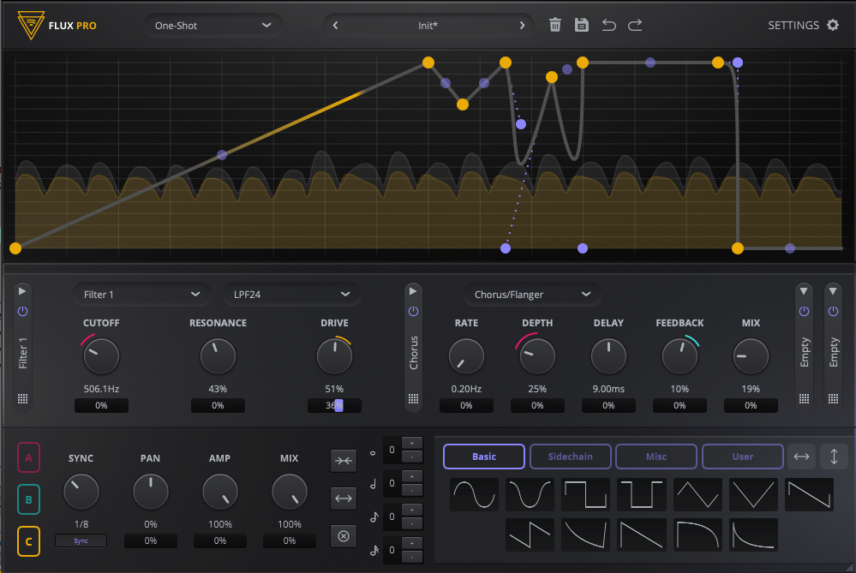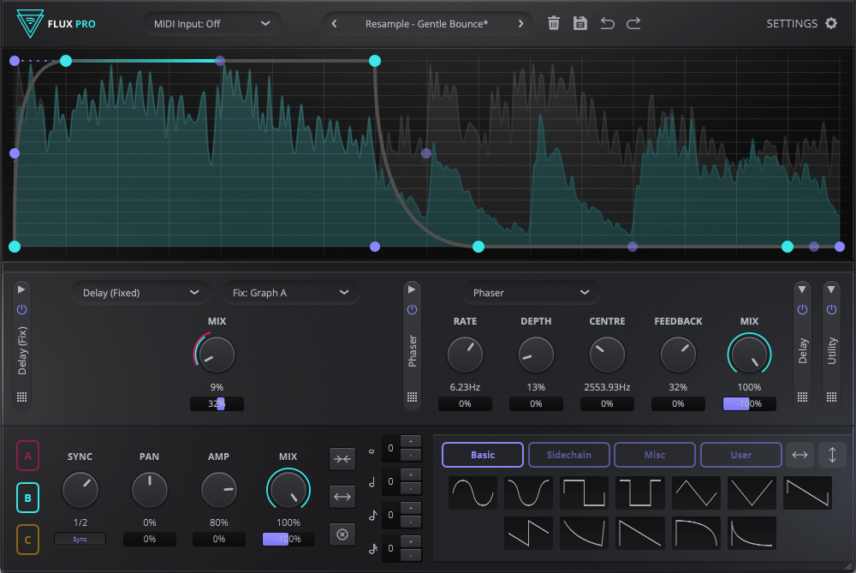Do you really need another modulation plugin? If you don’t already have Flux Pro, then the answer is yes.
Modulation is an absolute necessity in electronic music production. Our ears are demanding bastards. Evolved to help us survive in the natural world, they’re highly in tune with minute changes in sound. Feed it something without much variation, like a static synth or drum sample, and your ears (and the brain connected to them) will lose interest quickly. Not the best game plan for trying to win over new listeners. Hence the necessity of modulation.
It’s easy enough to apply modulation at the source if you’re working with a powerful synthesizer but that doesn’t help you with audio files. Even a synth will only give you access to things like filters and amplitude. Really, for more complete control, a dedicated modulation effect plugin is in order. God knows there are plenty out there to choose from but one that should definitely be on your radar is Flux Pro by Caelum Audio. It manages to do a lot of things in an intuitive way for a very attractive price.
Flux In Effects
Flux Pro has four effects slots that can each house one of 10 effects. These run the gamut from the basic and expected (filter, chorus/flange, utility with pan and amplitude) to a little more esoteric (two kinds of delay, ring modulation, stereo image widener) and more. Each effect has a number of controls that vary depending on the parameters. For example, the filter (there are actually two but they’re duplicates of each other) offers a large number of filter types, from traditional low and highpass to Moog-style Ladder filters and even Linkwitz-Riley crossover filters, a kind of non-resonant crossover filter.
The effects all sound excellent and the sheer variety ensures plenty of possibilities for sound-shaping. We are a little disappointed there’s no dedicated distortion or drive module, especially given that Caelum Audio makes a distortion plugin, but you can’t have everything.
All Mod(ulation) Cons
Flux Pro is more than just a multi-effects unit though. All those effects can of course be modulated. There are three modulation graphs, A, B and C. Click on the letter on the lower left to change to the desired graph, which is displayed across the top of the plugin. Graph color corresponds to letter color. You can edit the modulation curve in the graph by adding new points, erasing old ones, or dragging and dropping preset curves onto it. There are a ton of them, including basic shapes and ones designed to mimic sidechain pumping. You can also save your own.
Assigning modulation destinations is incredibly easy. Every parameter can be controlled 100% in both positive and negative directions. Just drag in the percentage bar under the knob that you want to control. The currently visible graph is the source. To change to a different source, choose a different graph. It’s that simple.
Finally, there are the usual global controls for syncing graphs to DAW tempo, pan, volume and mix amount plus additional graph editing tools like start offset, graph shortening and extending, and smoothing to reduce clicks from abrupt modulation changes. You can even use it to output MIDI and CV messages to control hardware or modular gear. How cool is that?
Mod It Up
To see how Flux Pro behaves in a real-world situation, we applied it to a number of different sounds in a track we’re working on. We purposely kept the sounds flat as we wanted to let Flux Pro do the heavy lifting. Here’s how that worked out.
We started with a static pad played from Ableton Live’s Wavetable. In Flux Pro we created a chain of Utility, Width, Filter and Delay effects in that order and set up three different graphs, one running faster than the others. Here are the results (with a hint of reverb from Ableton).
The original pad:
With rhythmic filter, delay and stereo imaging modulation:
Next, we wanted to see what it could do to a break. We wanted something glitchy and fun, so we went with a Filter, Phaser, Filter combination (we left the last slot blank) and drew in some pretty crazy modulation. We loved the results but found them a little over the top so we moved the plugin to a send track for a more subtle effect.
The original break:
With Flux Audio on a send:
For the bass, we started with a frankly boring one-shot sample repeated twice. We used two effects, the Filter and Chorus, and controlled them with three varying modulation curves. We also made use of the MIDI trigger feature. Flux Pro can respond to MIDI notes to either play through once with each note (one-shot mode like an envelope) or retrigger, which starts playback over each time. Here, we’re using retrigger mode to create a slightly different feel than just basic cycling.
The original bass:
And with MIDI-triggered filtering:
Finally, we wondered what would happen with Flux Pro on the master bus. The large preset section contains a Resample folder for glitchy and choppy results. We’re using the Delay (Fixed), which repitches the audio, plus the Phaser, Delay and Utility effects.
The original master output:
And glitchified by Flux Pro:
Final Thoughts
Flux Pro isn’t perfect. We like that you can change the plugin order but we wish you could run multiple instances of the same plugin. While they do provide two of the same filter for just this reason, why not be able to set up a chain of four filters? Or four delays? Maybe we’ll see this in a future update.
Ultimately, Flux Pro sounds great and is a delight to use. It’s intuitive and inspiring to work with and – as you heard – can transform blah, static sounds into modulated madness. Even if you already have a modulation plugin or two, they probably can’t do everything that Flux Pro does, which makes it worth a look and listen. And at $49.99 it’s a steal.
The Verdict
Price: $49
The Final Word
Turn blah static sounds into modulated madness.

